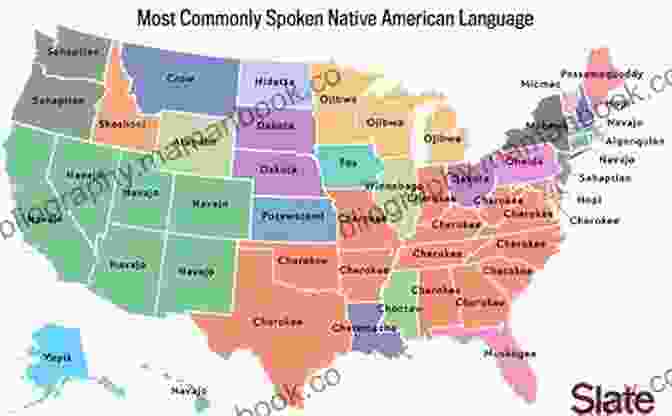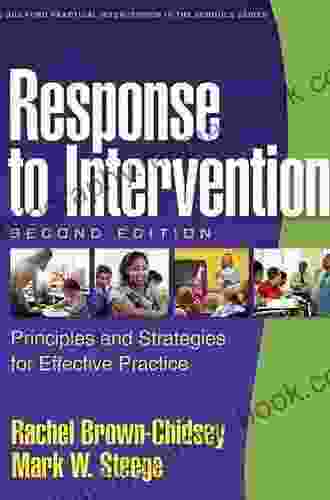The Enchanting Tapestry of American Languages: Why Their Study Enriches Our Understanding


The American continent is a linguistic mosaic, home to a vast array of languages that have shaped the rich tapestry of human communication. From the Arctic tundra to the tropical rainforests of Central and South America, hundreds of distinct languages have evolved over centuries, each carrying the imprint of a unique culture and worldview. Studying these languages offers a profound opportunity to not only preserve linguistic heritage but also to gain invaluable insights into the human experience.
Historical Significance
American languages have a rich and storied past, stretching back thousands of years. They are living testimonials to the ingenuity and resilience of indigenous peoples, who have used language as a means of transmitting knowledge, preserving cultural traditions, and maintaining social cohesion. By studying these languages, we gain a glimpse into the lives and experiences of our ancestors, gaining a deeper appreciation for the cultural and linguistic diversity that has shaped our continent.
4.7 out of 5
| Language | : | English |
| File size | : | 170 KB |
| Text-to-Speech | : | Enabled |
| Screen Reader | : | Supported |
| Enhanced typesetting | : | Enabled |
| Print length | : | 24 pages |
| Lending | : | Enabled |
| Hardcover | : | 300 pages |
| Item Weight | : | 1.2 pounds |
| Dimensions | : | 6 x 0.69 x 9 inches |
For example, the study of Nahuatl, the language of the Aztec civilization, provides insights into the complex belief systems and political structures of this ancient society. Similarly, the study of Quechua, spoken by the Inca Empire, sheds light on the intricate communication networks and administrative systems that facilitated the governance of one of the largest pre-Columbian empires in the Americas.
Cultural Diversity
American languages are intimately tied to the cultural identities of the communities that speak them. Each language embodies a unique set of values, beliefs, and ways of knowing the world. By studying these languages, we gain access to a kaleidoscope of cultural perspectives, broadening our understanding of human creativity and diversity.
For instance, the Yup'ik language of Alaska has a rich vocabulary related to sea ice, reflecting the central role of the Arctic environment in Yup'ik culture. The Lakota language of the Sioux Nation has a complex system of kinship terms that reveals the importance of family and community in Lakota society.
Cognitive Benefits
Beyond their historical and cultural significance, American languages also offer cognitive benefits to those who study them. Research has shown that learning a new language strengthens cognitive abilities such as memory, attention, and problem-solving. Additionally, studying American languages can improve our understanding of language structure and function, providing valuable insights into the nature of human communication.
Furthermore, studying American languages can foster greater cultural sensitivity and empathy. By understanding the nuances of language, we develop a deeper appreciation for the perspectives and experiences of others. This cross-cultural understanding is essential for fostering harmonious relationships in an increasingly interconnected world.
Challenges and Opportunities
While the study of American languages is essential for preserving heritage and promoting intercultural understanding, it also faces significant challenges. Many indigenous languages are endangered, with a dwindling number of native speakers. Globalization, assimilation, and the dominance of English have put tremendous pressure on these languages, threatening their survival.
However, there are also promising opportunities for language revitalization. Indigenous communities are actively working to preserve and revitalize their languages through educational programs, language immersion initiatives, and cultural events. Scholars and linguists are also collaborating with communities to document, preserve, and promote American languages.
Preservation and Documentation
Preserving and documenting American languages is crucial for ensuring their survival and accessibility for future generations. Linguists and researchers are working tirelessly to create dictionaries, grammars, and other resources that capture the richness and complexity of these languages. Additionally, oral histories, traditional stories, and songs are being recorded and transcribed, providing a valuable record of indigenous knowledge and cultural traditions.
For example, the Smithsonian Institution's National Museum of the American Indian has an extensive collection of American Indian languages, including recordings, manuscripts, and other resources. The Endangered Language Alliance also works to support language revitalization efforts and document endangered languages around the world.
Education and Revitalization
Education is key to the revitalization and preservation of American languages. Indigenous communities are establishing language immersion schools and programs to ensure that young generations acquire and maintain their native languages. Universities and colleges are also offering courses and programs in American languages, providing opportunities for students to learn about and contribute to language revitalization efforts.
Furthermore, community-based initiatives are playing a vital role in language revitalization. Elders and fluent speakers are sharing their knowledge with younger generations, passing on cultural traditions and ensuring the continuity of language and culture.
The study of American languages is an enriching and rewarding endeavor that offers invaluable insights into human history, cultural diversity, and cognitive development. By preserving and revitalizing these languages, we not only safeguard linguistic heritage but also foster greater understanding, empathy, and intellectual curiosity.
As we navigate the complexities of our globalized world, the study of American languages serves as a reminder of the interconnectedness of human experience and the importance of preserving the rich tapestry of cultural expression. Let us continue to celebrate and support the vibrant languages of the Americas, ensuring that their voices continue to resonate through the corridors of time.
4.7 out of 5
| Language | : | English |
| File size | : | 170 KB |
| Text-to-Speech | : | Enabled |
| Screen Reader | : | Supported |
| Enhanced typesetting | : | Enabled |
| Print length | : | 24 pages |
| Lending | : | Enabled |
| Hardcover | : | 300 pages |
| Item Weight | : | 1.2 pounds |
| Dimensions | : | 6 x 0.69 x 9 inches |
Do you want to contribute by writing guest posts on this blog?
Please contact us and send us a resume of previous articles that you have written.
 Top Book
Top Book Novel
Novel Fiction
Fiction Nonfiction
Nonfiction Literature
Literature Paperback
Paperback Hardcover
Hardcover E-book
E-book Audiobook
Audiobook Bestseller
Bestseller Classic
Classic Mystery
Mystery Thriller
Thriller Romance
Romance Fantasy
Fantasy Science Fiction
Science Fiction Biography
Biography Memoir
Memoir Autobiography
Autobiography Poetry
Poetry Drama
Drama Historical Fiction
Historical Fiction Self-help
Self-help Young Adult
Young Adult Childrens Books
Childrens Books Graphic Novel
Graphic Novel Anthology
Anthology Series
Series Encyclopedia
Encyclopedia Reference
Reference Guidebook
Guidebook Textbook
Textbook Workbook
Workbook Journal
Journal Diary
Diary Manuscript
Manuscript Folio
Folio Pulp Fiction
Pulp Fiction Short Stories
Short Stories Fairy Tales
Fairy Tales Fables
Fables Mythology
Mythology Philosophy
Philosophy Religion
Religion Spirituality
Spirituality Essays
Essays Critique
Critique Commentary
Commentary Glossary
Glossary Bibliography
Bibliography Index
Index Table of Contents
Table of Contents Preface
Preface Introduction
Introduction Foreword
Foreword Afterword
Afterword Appendices
Appendices Annotations
Annotations Footnotes
Footnotes Epilogue
Epilogue Prologue
Prologue Edward S Ebert
Edward S Ebert C F Edwards
C F Edwards Marguerite Sauvage
Marguerite Sauvage Claire Saffitz
Claire Saffitz Otm Author Services
Otm Author Services Nancy Harris
Nancy Harris J P Muni
J P Muni Ian Linton
Ian Linton Kamarun Kalam
Kamarun Kalam Juliet Blackwell
Juliet Blackwell Hampton Sides
Hampton Sides Paul Black
Paul Black Angel Rosen
Angel Rosen Keith Whitaker
Keith Whitaker Abby Linwood
Abby Linwood Kim Zubek
Kim Zubek Jack May
Jack May Tim Fulford
Tim Fulford Charlie A Beckwith
Charlie A Beckwith Nela Collins
Nela Collins
Light bulbAdvertise smarter! Our strategic ad space ensures maximum exposure. Reserve your spot today!

 Haruki MurakamiYour Complete Guide To Financial Independence And Early Retirement From Money
Haruki MurakamiYour Complete Guide To Financial Independence And Early Retirement From Money Bryson HayesFollow ·16k
Bryson HayesFollow ·16k Grayson BellFollow ·9.7k
Grayson BellFollow ·9.7k Harvey BellFollow ·6.1k
Harvey BellFollow ·6.1k Mikhail BulgakovFollow ·7k
Mikhail BulgakovFollow ·7k H.G. WellsFollow ·8.5k
H.G. WellsFollow ·8.5k Ed CooperFollow ·17.8k
Ed CooperFollow ·17.8k Ray BlairFollow ·10.9k
Ray BlairFollow ·10.9k Finn CoxFollow ·9.4k
Finn CoxFollow ·9.4k

 Patrick Rothfuss
Patrick RothfussHow to Make a Million Dollars: No Secrets
Making a million dollars...

 Robert Heinlein
Robert HeinleinResponse to Intervention, Second Edition: RTI in Practice
A Comprehensive Resource for Educators and...

 Timothy Ward
Timothy WardUnravel the Gripping Assassination Thriller Bursting with...
Prepare yourself for a...
4.7 out of 5
| Language | : | English |
| File size | : | 170 KB |
| Text-to-Speech | : | Enabled |
| Screen Reader | : | Supported |
| Enhanced typesetting | : | Enabled |
| Print length | : | 24 pages |
| Lending | : | Enabled |
| Hardcover | : | 300 pages |
| Item Weight | : | 1.2 pounds |
| Dimensions | : | 6 x 0.69 x 9 inches |
















